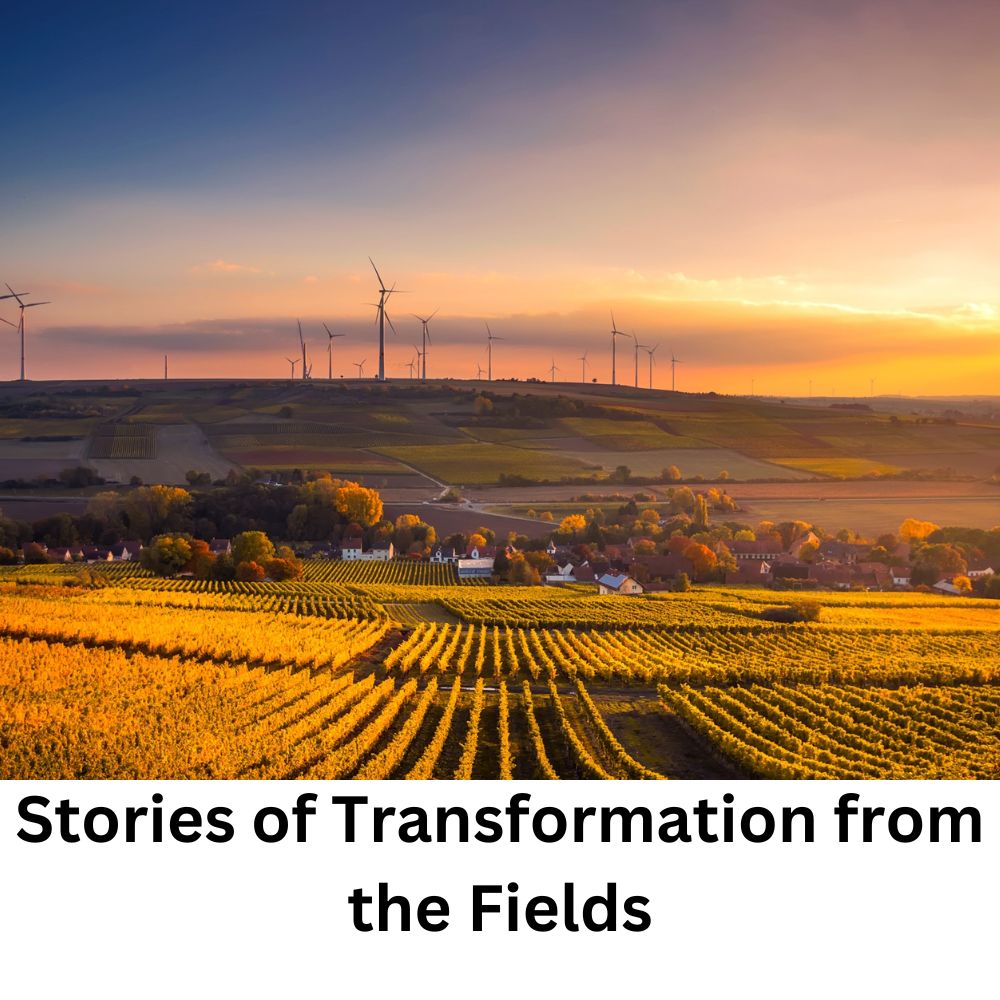Introduction
Agroforestry has emerged as a beacon of hope in the quest for sustainable and regenerative agriculture. It is not just a farming technique but a transformative philosophy that combines trees, crops, and livestock in ways that heal the land, benefit communities, and safeguard our planet’s future. In this article, we will delve into real-life stories and case studies that showcase the remarkable impact of agroforestry in different parts of the world. These agroforestry tales highlight the potential for change, sustainability, and prosperity within our grasp.
- The Greening of the Sahel: Yacouba Sawadogo’s Story
Our first tale brings us to the Sahel region of West Africa, a semi-arid area plagued by desertification and food insecurity. In the 1980s, Yacouba Sawadogo, a farmer from Burkina Faso, decided to take action. Yacouba saw his land deteriorating, and more than traditional farming practices were needed to sustain his family.
Yacouba turned to agroforestry, adopting a technique called “zai.” He dug pits in his fields and filled them with organic matter, allowing rainwater to be efficiently captured and stored. He then planted drought-resistant tree species like the Faidherbia albida alongside his crops, which provided valuable shade and nitrogen-fixing properties.
Over the years, Yacouba’s efforts bore fruit. His fields became more fertile, and his crop yields increased significantly. His success attracted attention, and many neighboring farmers adopted his methods. Today, the once-barren landscapes of the Sahel are gradually transforming into lush, productive farmlands.
Yacouba’s story illustrates how agroforestry can combat desertification, improve soil quality, and empower communities to thrive in challenging environments.
- The Peruvian Amazon’s Treasure: Brazil Nut Agroforestry
In the heart of the Peruvian Amazon, indigenous communities embarked on an ambitious agroforestry project centered around Brazil nut trees (Bertholletia excelsa). These towering giants, native to the Amazon rainforest, produce large nuts rich in nutrients and are a valuable source of income for local people.
The agroforestry approach involved planting and nurturing Brazil nut trees alongside traditional crops like cassava, plantains, and cocoa. This integrated system provided a dual benefit – not only did it safeguard the rainforest by discouraging deforestation for agriculture, but it also provided a sustainable livelihood for the indigenous communities.
The project required long-term commitment as Brazil nut trees take decades to mature and bear fruit. However, the results were transformative. The communities gained financial stability from selling Brazil nuts and diversified their income sources while preserving their ancestral lands.
This agroforestry tale teaches us that sustainable and culturally sensitive practices can help protect biodiversity and elevate the quality of life for indigenous communities in the Amazon.
- Alley Cropping for Profit and Resilience in the USA
In the United States, farmers have embraced agroforestry to enhance their profits and increase the resilience of their operations. One striking example comes from the Midwest, where farmers have adopted alley cropping systems.
In alley cropping, rows of trees or shrubs are interspersed with traditional row crops. This configuration prevents soil erosion and compaction and improves microclimates for crop growth. Farmers in Missouri have successfully incorporated black walnut and pecan trees among their corn and soybean fields.
This practice doesn’t just benefit the environment; it also boosts farmers’ income. The trees provide valuable timber and nuts, diversifying revenue streams and reducing the dependency on commodity crop prices. Moreover, combining trees increases biodiversity, reducing the need for synthetic pesticides and fertilizers.
These American agroforestry stories demonstrate that modern agriculture can coexist harmoniously with ecological preservation and economic viability.
- The Sacred Groves of India: Agroforestry Meets Tradition
In India, agroforestry often intersects with deep-rooted cultural traditions and spiritual beliefs. Sacred groves, small patches of forests dedicated to local deities, have existed for centuries in many parts of the country. These groves are conserved for their holy significance and serve as living examples of agroforestry.
Local communities in India have learned to cultivate diverse crops within the sacred groves. The canopy provided by tall trees offers protection from harsh weather conditions, and the groves become reservoirs of biodiversity.
In Kerala, farmers have embraced agroforestry near sacred groves, growing spices like cardamom, pepper, and vanilla beneath the forest canopy. This approach preserves ancient traditions and showcases how agroforestry can enhance crop diversity, yield, and resilience.
These stories from India remind us that agroforestry can be seamlessly integrated into existing cultural practices, offering a bridge between tradition and sustainability.
Conclusion
Agroforestry is more than just a farming method; it is a holistic approach to agriculture that transforms lives, landscapes, and ecosystems. The tales of Yacouba Sawadogo, the Peruvian Amazon’s Brazil nut project, American alley cropping, and Indian sacred groves demonstrate that agroforestry is a viable and adaptable solution to the world’s agricultural and environmental challenges.
These stories also highlight the importance of community involvement, long-term commitment, and the preservation of traditional knowledge. As we face the pressing issues of climate change, food security, and biodiversity loss, agroforestry emerges as a beacon of hope, offering a path toward sustainable and regenerative agriculture for future generations. By harnessing the power of agroforestry, we can sow the seeds of transformation in our fields, communities, and world.
